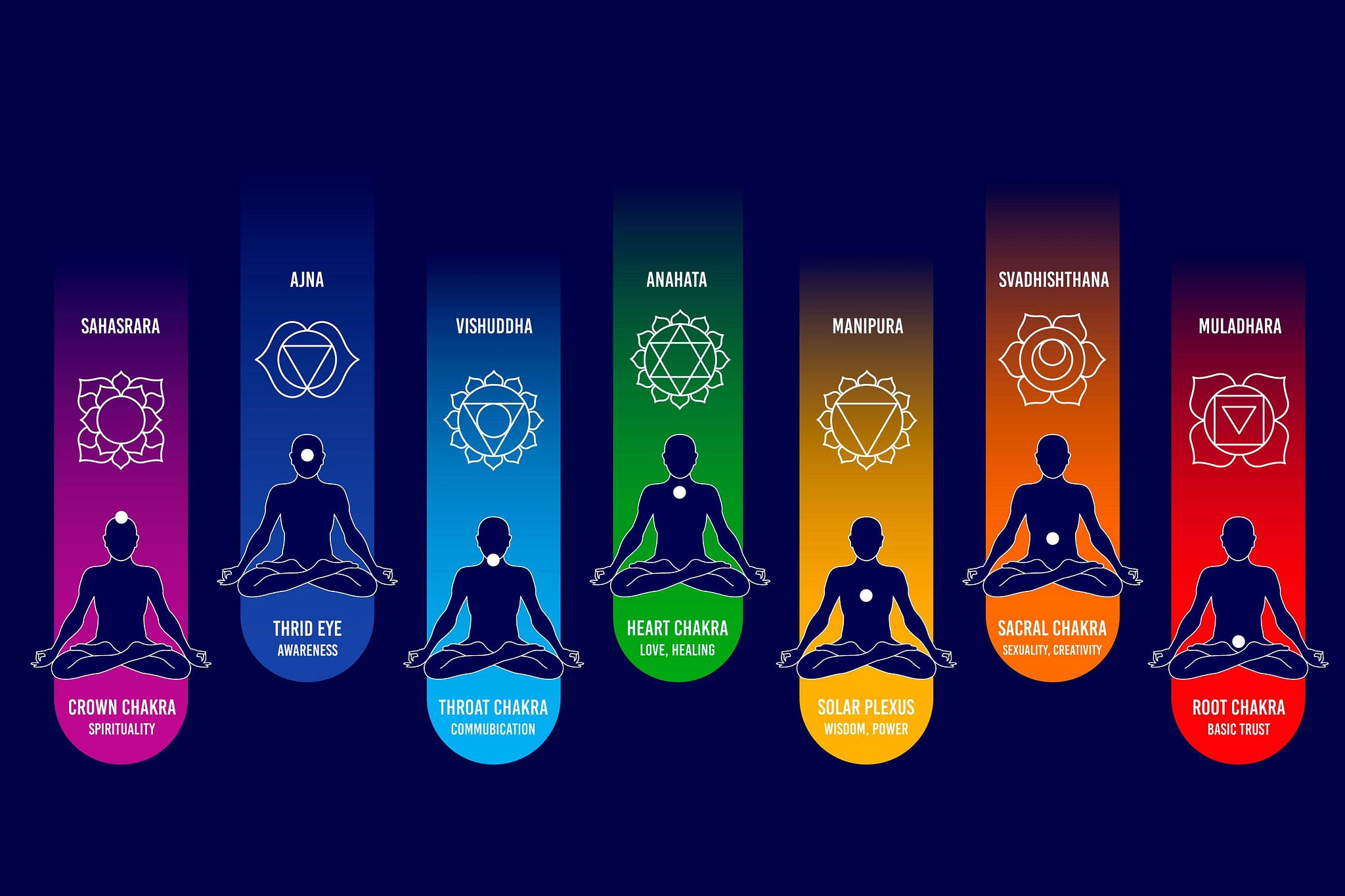views
Introduction to Shakti Path
Shakti Path is a profound practice rooted in ancient Indian spiritual traditions, combining the Sanskrit words “Shakti,” meaning energy, and “Path,” meaning transmission. In essence, Shakti Path refers to the process of transmitting divine energy from a master or guru to a disciple or receiver. This transmission facilitates spiritual awakening and the activation of Kundalini energy, which lies dormant at the base of the spine for many individuals.
The Importance of Energy Transmission
Energy transmission is a crucial aspect of spiritual practices, particularly in the context of healing and personal transformation. It involves two roles: the transmitter, who channels divine energy, and the receiver, who absorbs this energy to achieve a heightened state of consciousness. The effectiveness of this transmission largely depends on the purity of intention, the state of the chakras (energy centers), and the adherence to spiritual disciplines.
Preparation for Shakti Path
Before engaging in Shakti Path, it is essential to prepare the body and mind. This preparation typically involves collection and concentration practices such as:
-
Setting the Space: Create a serene environment conducive to meditation. This can include dim lighting, calming music, and the presence of sacred objects.
-
Body Alignment: Sit with a straight spine to facilitate the flow of energy. Comfort is key, as a relaxed body allows for easier energy transmission.
-
Breath Awareness: Focus on lengthening and deepening the breath. This practice calms the mind and opens the energy pathways within the body.
-
Visualizing the Divine: Envision the divine essence permeating all existence. This visualization helps cultivate a sense of connection to the universal energy that flows through everything.
-
Chanting Sacred Mantras: Chanting “Om” three times as a sacred sound reverberates through the body, activating the higher chakras and aligning the practitioner’s energy with divine consciousness.
Understanding the Chakras

Chakras are the energy centers of the body, each corresponding to different aspects of physical, emotional, and spiritual well-being. The primary chakras include:
-
Root Chakra (Muladhara): Located at the base of the spine, associated with survival and grounding.
-
Sacral Chakra (Svadhisthana): Located in the lower abdomen, linked to emotions, creativity, and sexuality.
-
Solar Plexus Chakra (Manipura): Situated in the upper abdomen, related to personal power and self-esteem.
-
Heart Chakra (Anahata): Centered in the chest, associated with love and compassion.
-
Throat Chakra (Vishuddha): Located in the throat, linked to communication and self-expression.
-
Third Eye Chakra (Ajna): Positioned between the eyebrows, related to intuition and perception.
-
Crown Chakra (Sahasrara): At the top of the head, associated with spiritual connection and enlightenment.
For effective energy transmission, it is crucial that both the transmitter and receiver have their chakras open and balanced. Blockages in these energy centers can hinder the flow of divine energy, diminishing the effectiveness of Shakti Path.
Spiritual Disciplines: The Foundation of Energy Transmission

To become an effective transmitter of energy, one must adhere to certain spiritual disciplines. These can be categorized into five universal and five personal disciplines, often referred to as Yama and Niyama in yogic philosophy:
-
Yama (Universal Disciplines):
-
Ahimsa (Non-Violence): Cultivating compassion and avoiding harm to oneself and others.
-
Satya (Truthfulness): Embracing honesty in thoughts, words, and actions.
-
Asteya (Non-Stealing): Respecting the possessions and boundaries of others.
-
Brahmacharya (Celibacy or Moderation): Practicing self-restraint in sexual matters.
-
Aparigraha (Non-Possessiveness): Letting go of attachment to material possessions.
2. Niyama (Personal Disciplines):
-
Saucha (Purity): Maintaining cleanliness of body, mind, and environment.
-
Santosha (Contentment): Cultivating acceptance and gratitude for what one has.
-
Tapas (Austerity): Practicing self-discipline and perseverance in spiritual practices.
-
Svadhyaya (Self-Study): Engaging in introspection and the study of sacred texts.
-
Ishvara Pranidhana (Surrender to the Divine): Cultivating a deep sense of trust and surrender to a higher power.
The Process of Energy Transmission
Once the preparatory steps and spiritual disciplines are in place, the actual process of Shakti Path can begin. This typically involves:
-
Cleansing the Energy Centers: Before transmitting energy, it is vital to cleanse the chakras, removing any blockages and ensuring a smooth flow of energy. Techniques may include breathwork, visualization, and gentle movement.
-
Intention Setting: The transmitter must set a clear intention for the session, focusing on the desired outcome for the receiver, such as healing, awakening, or balance.
-
Transmitting Energy: The transmission can occur through various methods:
-
Touch: Lightly placing hands on the chakras or areas of concern.
-
Mudras: Using specific hand gestures to channel energy.
-
Eye Gazing: Using focused intent through the eyes to transmit energy.
-
Breath: Utilizing specific breathing techniques to enhance energy flow.
Receiving Mode: The receiver should relax and open themselves to the energy, allowing it to flow freely. They may experience physical sensations, emotional releases, or visualizations as the energy works within them.
Integration: After the transmission, it is essential for the receiver to take time to integrate the experience. This can involve journaling, meditation, or simply resting to allow the energy to settle.
Conclusion: Embracing the Journey of Shakti Path
Shakti Path is more than just an energy transmission; it is a spiritual journey that fosters growth, healing, and connection to the divine. By understanding the principles behind energy work, practitioners can enhance their skills as transmitters, facilitating profound transformations in themselves and others. As with any spiritual practice, it requires dedication, respect for the traditions, and a sincere desire to serve the highest good.
Ultimately, Shakti Path invites individuals to explore their inner landscapes, awaken their dormant energies, and connect with the universal flow of life, fostering a deeper understanding of themselves and their place in the cosmos.
FREQUENTLY ASKED QUESTIONS?
1. How can individuals assess whether their chakras are balanced and open before engaging in Shakti Path practices?
Individuals can assess whether their chakras are balanced and open before engaging in Shakti Path practices through a combination of self-reflection, physical sensations, and specific techniques. Here are some detailed methods to evaluate chakra health:
-
Self-Reflection and Introspection: One of the most profound ways to gauge chakra health is through self-awareness. Individuals should examine their emotional, mental, and physical states, as each chakra is linked to different areas of life. For instance, if someone frequently experiences anxiety or a lack of confidence, it may indicate blockages in the solar plexus chakra.
-
Physical Sensations and Symptoms: Each chakra is associated with specific physical sensations. For example, blockages in the throat chakra may manifest as difficulty in communication or a sore throat, while issues in the heart chakra can lead to emotional pain or chest discomfort. Individuals should pay attention to any persistent physical discomfort or emotional turmoil that may suggest an imbalance.
-
Meditative Visualization: Engaging in meditation can help individuals connect with their chakras. By visualizing each chakra and focusing on its corresponding color, shape, and area of the body, practitioners can assess their energy flow. If a chakra appears dim or feels heavy during visualization, this may indicate a blockage.
-
Energy Testing Techniques: Practitioners can use pendulums or dowsing rods to assess chakra energy. When held over each chakra, the movement of the pendulum can indicate whether energy is flowing freely (circular motion) or if there is a blockage (no movement or erratic movement).
-
Breath and Movement Exercises: Incorporating yoga or specific breathwork can also serve as a diagnostic tool. Practicing asanas that correspond to each chakra can reveal areas of tension or limitation in the body. For instance, if a person struggles with heart-opening poses, it may indicate a blockage in the heart chakra.
-
Chakra Assessment Tools: Some practitioners use chakra assessment charts or questionnaires that help identify areas of imbalance based on feelings, thoughts, and behaviors. These tools can provide insight into which chakras may require more attention.
-
Intuitive Insights: Tuning into one’s intuition is a powerful way to assess chakra health. Many people can develop a sense of knowing when one of their chakras feels out of balance. This intuitive awareness can be honed through regular meditation and mindfulness practices.
By employing these methods, individuals can gain a comprehensive understanding of their chakra health, allowing them to approach Shakti Path practices with a clearer awareness of their energy dynamics. This self-assessment can enhance the effectiveness of the practices, facilitating a deeper connection to the divine energy they seek to transmit and receive.
2. What role do emotions play in the maintenance of chakra balance, and how can emotional healing practices enhance chakra alignment?
Emotions play a crucial role in maintaining chakra balance, as each of the seven main chakras is intricately linked to specific emotional states and experiences. When emotions are unprocessed or suppressed, they can lead to blockages or imbalances in the corresponding chakra, affecting not only emotional health but also physical well-being. Here’s a detailed exploration of this relationship and how emotional healing practices can enhance chakra alignment:
The Role of Emotions in Chakra Maintenance
-
Chakra-Emotion Connection: Each chakra is associated with particular emotions:
-
Root Chakra (Muladhara): Linked to feelings of safety and security. Fear or instability can lead to blockages.
-
Sacral Chakra (Svadhisthana): Governs creativity and sexuality. Guilt or shame can create energetic disturbances.
-
Solar Plexus Chakra (Manipura): Associated with self-esteem and personal power. Low self-confidence or anger can disrupt its flow.
-
Heart Chakra (Anahata): Connected to love and compassion. Grief or resentment can hinder its openness.
-
Throat Chakra (Vishuddha): Relates to communication and expression. Feelings of inadequacy or fear of speaking can lead to blockages.
-
Third Eye Chakra (Ajna): Tied to intuition and insight. Lack of clarity or confusion can affect its functioning.
-
Crown Chakra (Sahasrara): Involves spiritual connection. Feelings of disconnection or isolation can impede its energy.
Emotional Blockages: When emotions are not effectively processed or expressed, they can manifest as energetic blockages in the corresponding chakras. For instance, unresolved trauma may lead to a stagnant root chakra, resulting in feelings of insecurity or anxiety. Recognizing these emotional states is vital for maintaining chakra health.
Emotional Healing Practices for Chakra Alignment
-
Mindfulness and Awareness: Practicing mindfulness helps individuals become aware of their emotional states and how they correlate with physical sensations or chakra health. By acknowledging and processing emotions without judgment, individuals can prevent blockages from forming.
-
Journaling: Writing about feelings and experiences can facilitate emotional release. Journaling allows individuals to articulate their emotions, providing insights into underlying issues related to specific chakras. For example, writing about feelings of anger may highlight blockages in the solar plexus chakra.
-
Somatic Practices: Techniques such as yoga, dance, or bodywork can help release stored emotions from the body. These practices encourage movement and expression, promoting the flow of energy through the chakras. For instance, heart-opening yoga poses can help release grief associated with the heart chakra.
-
Breathwork: Specific breathwork techniques can enhance emotional processing and activate chakras. Deep, conscious breathing can calm the nervous system and facilitate the release of pent-up emotions, thereby promoting chakra alignment.
-
Meditation and Visualization: Guided meditations focused on emotional healing can help individuals visualize the release of negative emotions and the infusion of positive energy into their chakras. For example, envisioning a warm, healing light filling the heart chakra can promote feelings of love and compassion.
-
Energy Healing Modalities: Practices such as Reiki, crystal healing, or sound therapy can target emotional blockages within the chakras. These modalities work on an energetic level, helping to clear stagnant energy and restore balance.
-
Therapeutic Techniques: Engaging with therapeutic practices, such as counseling or psychotherapy, allows individuals to explore and address deeper emotional wounds. This can lead to profound healing and a more balanced chakra system.
Conclusion
Emotions are integral to the maintenance of chakra balance, influencing both energetic flow and overall well-being. By engaging in emotional healing practices, individuals can effectively enhance chakra alignment, fostering a more harmonious and resilient energetic system. This alignment not only supports emotional health but also deepens spiritual growth and connection, facilitating a more profound experience in practices like Shakti Path. By recognizing and addressing emotional blockages, individuals empower themselves to live more fully and authentically, embracing the transformative potential of their energy system.























Comments
0 comment